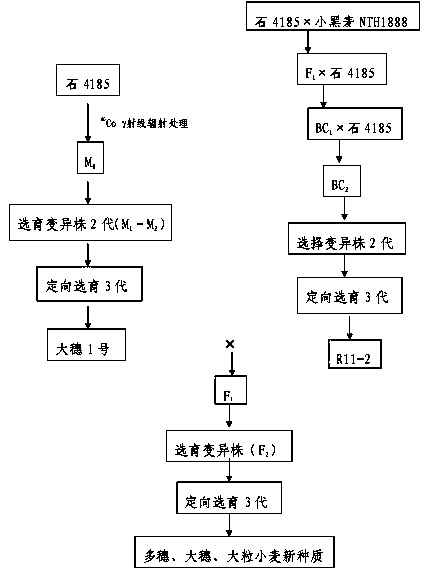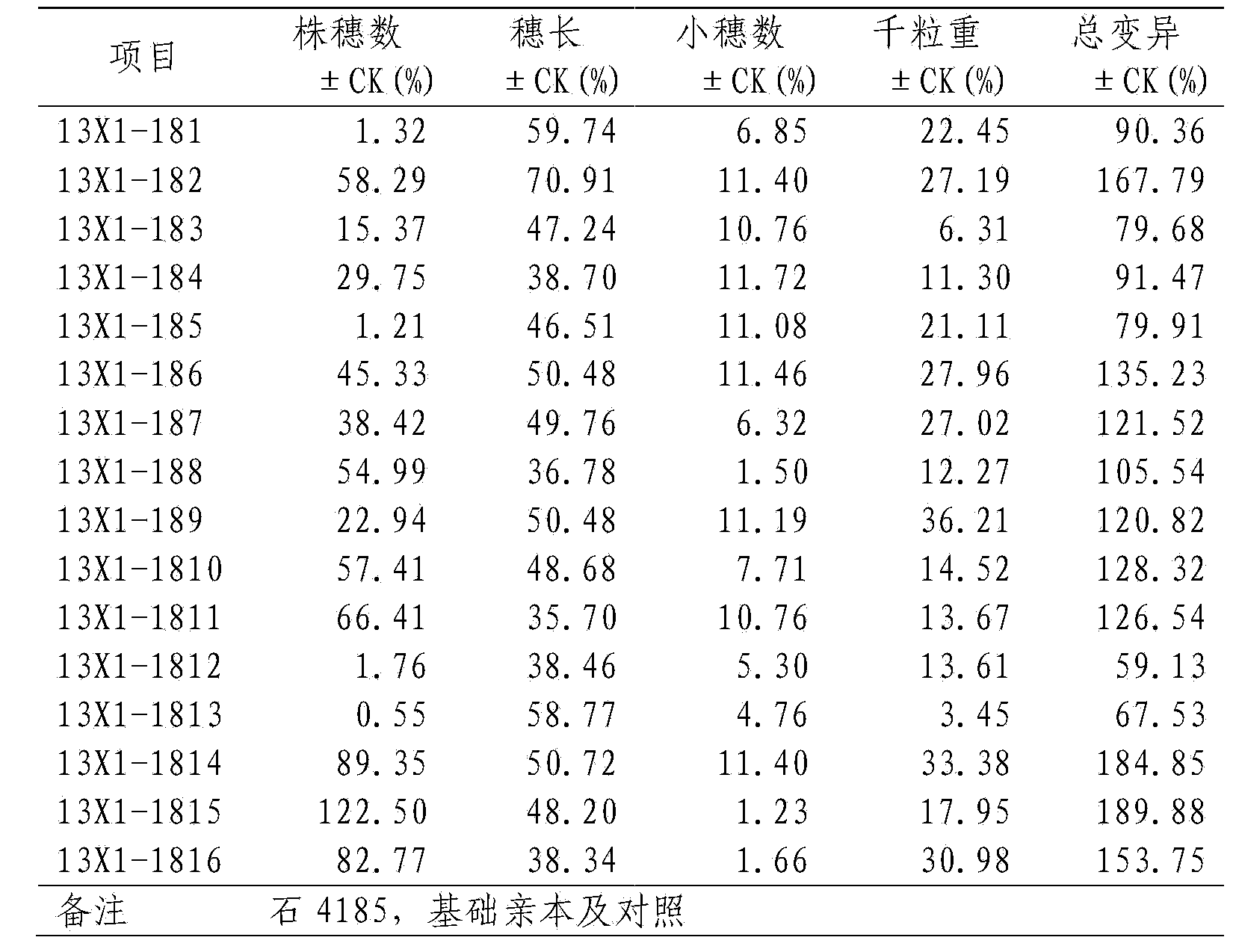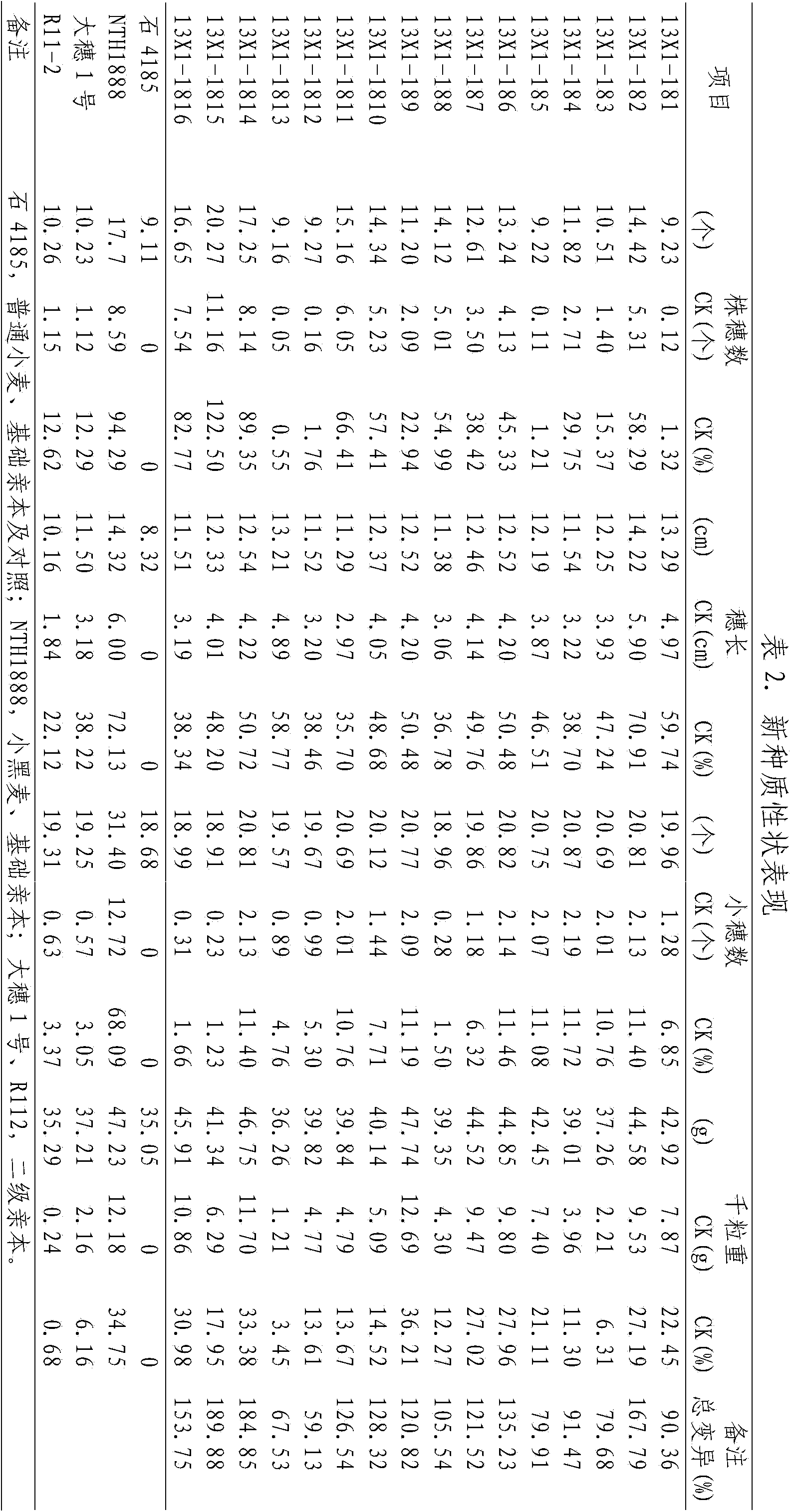Method for breeding new germplasms of wheat including multi-ear wheat, large-ear wheat and large-grain wheat
A new germplasm and wheat technology, applied in the direction of botany equipment and methods, applications, plant genetic improvement, etc., can solve the problems of less total grains per panicle, decrease of two factors, difficulty in coordination, etc.
- Summary
- Abstract
- Description
- Claims
- Application Information
AI Technical Summary
Problems solved by technology
Method used
Image
Examples
Embodiment Construction
[0037] The wheat variety Shi 4185 used in the present invention was bred by Shijiazhuang Agricultural Science Research Institute in 1997, and the used triticale line NTH1888 originated from France.
[0038] A method for breeding new germplasm of multiple ears, large ears, and large grain wheat, specifically comprising the following steps:
[0039] 1. Breeding of a new wheat line with large spike type, Dasui No. 1
[0040] In 2001, the wheat variety Shi 4185 was selected as the basic material with excellent comprehensive traits such as many spikes per plant, large population, high and stable yield, and was tested at a dose of 25,000 RAD. 60 Co gamma ray radiation treatment to obtain M 0 seed. In the same year, it was planted in the test station of the applicant unit, and single-grain on-demand was carried out in a plot with a plant spacing of 10cm, a row spacing of 20cm, and a row length of 8m (the same below);
[0041] In 2002, M 1 Select 3 individual plants with panicle l...
PUM
 Login to View More
Login to View More Abstract
Description
Claims
Application Information
 Login to View More
Login to View More - R&D
- Intellectual Property
- Life Sciences
- Materials
- Tech Scout
- Unparalleled Data Quality
- Higher Quality Content
- 60% Fewer Hallucinations
Browse by: Latest US Patents, China's latest patents, Technical Efficacy Thesaurus, Application Domain, Technology Topic, Popular Technical Reports.
© 2025 PatSnap. All rights reserved.Legal|Privacy policy|Modern Slavery Act Transparency Statement|Sitemap|About US| Contact US: help@patsnap.com



